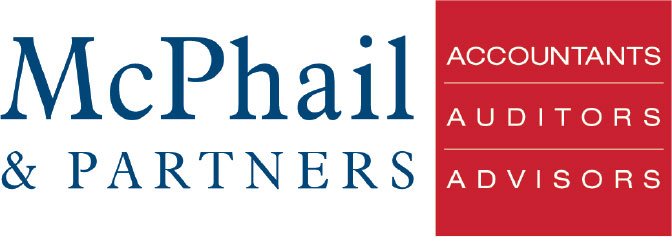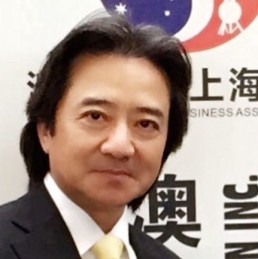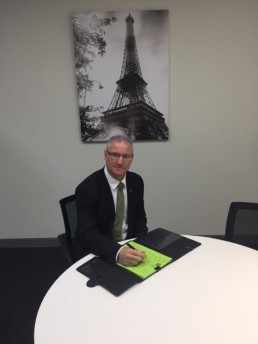Inspiring business story - William Wang and World Wire Cables
William Wang's story is inspiring. Arriving in Australia with only $60 in his back pocket, he went on to study an MBA and build an extremely successful electrical cable business, without knowing much about cables at that time! He is now called upon to give interviews and speeches to academics, Government and TV stations. Thank you, William for sharing your story with us and we wish you all the best with your upcoming speeches.
1.You were recently interviewed by Shanghai TV station, What was this about?
The TV interview is for a segment called '1st Economy'. It looks at how Chinese overseas have survived, developed their business and mixed with the community. I am part of the third group of Chinese to arrive in Aus. The first was 500 years ago that would pass through Darwin on route to other South East Asian countries; the second was 160 years ago when Chinese came during the gold rush. We were the first group to arrive by plane and not by boat.
2. In June, you will be one of only two Chinese businessmen invited to deliver a speech at Government House, to the leaders of China and Australia as well as international academics. Tell us about this.
I have been asked to speak about my experience as a Chinese Businessman in Australia, about how I have been able to integrate into the community, the challenges I faced when I came to Australia.
3.How did you build up a successful business?
The Chinese Economic Reform resulted in a lot of deregulation & export was encouraged. There was a lot of private investment in manufacturing factories, so our business had access to state of the art technology and was able to develop high-quality cables such as fire grade, mining, and extra high voltage cables which are highly sought after. This combined with the mining boom and favourable commodity prices from 2006-2014 saw our business grow and really succeed.
4.How did you gain access to the high-quality Chinese manufacturers & why cables?
I came to Australia with USD$60, worked three jobs including weekends while doing my MBA in International Trade - Non-Conventional Trade (Barter & Counter trade), and at the same time supporting my wife and child. Non-commercial trade was similar to the 'barter' system. I worked with AWB and traded with countries such as China, and the soviet union. When I first started, it was initially a barter system, then moved to Letter of Credit as China had little US$. Wheat was traded for other commodities such as minerals. I dealt with a lot of machine tools, and when asked by China as to what commodity I would like to trade, I suggested Cables. As a result, I was given access to high-end manufacturers in China.
5. With no experience in cables you would have had some obstacles to overcome, what were some of them?
Cables come on large reels & when I got my first order for 100m, I had no way of unwinding the huge reel of cables that had been shipped from China or measuring the amount to cut. So I built a machine to unwind the cables. I used wood from Bunnings and bicycle wheels (from the bicycle I used to ride to university) and bought a motor to unwind the reel. I then developed an electronic device to attach to the cable to measure it as it was being unwound. (Please see image below).
6.The world is getting smaller, which industries do you believe will shine in years to come?
Infrastructure is the future. A lot of people in China have applied or are on their way to Australia and are looking to invest. Australia's population was 16 million 30 years ago, it is now 24 million which is almost 50% increase, but infrastructure has not grown at same pace. Shanghai has the same population as Australia, but they have 13-15 underground subways, express railways, and highways. Melbourne has yet to see an express railway. Investing in Hospitals - nowadays even private health insurance can result in wait times and shared wards. There is a lot of catch-up opportunity.
7.You are also quite involved in the community, can you tell us more?
I am the honorary president of the Shanghai and Australian Business Association as well as the president of the Chinese Golf Association. I hear Brian McPhail loves his Golf; perhaps you can organise a game!
Click here for more information about World Wire Cables.

Tax news, views and clues, February 2017
ATO priority on settling cases – but not at any cost
The ATO has advised that it places a high priority on resolving tax disputes early, including through reaching settlements where appropriate, but that it will not settle disputes at any cost. It says “the sensible use of settlements” is part of its commitment to earlier and more effective dispute resolution. In this regard, the ATO has advised that in 2015–2016, it settled 1,362 cases (31% more than in the previous year) and that the increased number of settlements can be attributed entirely to settlements finalised as part of Project DO IT (Disclose Offshore Income Today).
TIP: The ATO’s stated policy of “placing a high priority on resolving disputes early, including through settlements where appropriate” is something that should be kept in mind in any dispute with the Commissioner, whether large or small. A settlement may provide a great opportunity to finalise a difficult or long-running dispute.
ATO develops work-related expenses risk profiles
The ATO has developed work-related expenses risk profiles to help it identify how work-related expense deduction amounts compare for similar taxpayers. The ATO said improvements in data analytics and modelling have allowed it to create a risk profile for tax agents’ practices based on comparing their clients’ work-related expenses claims with those made by similar taxpayers.
The ATO has said it will share these risk profiles with some tax professionals where their clients’ claims appear higher than expected.
TIP: The ATO’s increasing capacity to monitor the often difficult issue of work-related expenses claims means taxpayers and tax professionals need to take care when preparing returns. Contact us if you would like to discuss which of your work-related expenses may be tax deductible.
Onus on taxpayers to show no fraud or evasion: Full Federal Court
Several taxpayers have been unsuccessful in their appeals to the Full Federal Court in which they challenged tax assessments that dramatically increased their assessable income for certain income years. In each case, the Court confirmed that where the Commissioner of Taxation has issued an amended or default assessment out of time on the grounds of taxpayer “fraud or evasion”, the taxpayer bears the responsibility of proving that such fraud or evasion does not exist.
No disclaimer of trust interest: unsuccessful appeal
A beneficiary of two trusts whose assessable income was increased from some $70,000 to some $13 million in light of her entitlement to distributions from the trusts has been unsuccessful in claiming on appeal that she had “disclaimed her interests” in the trusts. Instead, the AAT found that she could not argue she had disclaimed her interests in the distributions. This finding was on the basis that she did not bring up having made “disclaimers” when she originally objected to amended assessments that the Commissioner of Taxation issued in 2013. Additionally, in any event, the AAT found that the disclaimers were legally ineffective because of the significant period of time between the distributions being made (in 2006 and 2007) and the disclaimers being made (in 2015).
TIP: Any attempt to disclaim an interest in a trust for tax purposes must be legally valid first – and the key consideration is that there must not have been behaviour that indicates implied acceptance of the interest. In this case, the taxpayer’s behaviour was problematic because she did not act until well after she received the distributions and they were assessed as part of her income.
Admin penalties of 75% for failing to lodge FBT returns
The AAT has confirmed that 75% administrative penalties were rightfully imposed on several companies for their failure to lodge FBT returns over a four-year period. The AAT found that the Commissioner of Taxation was obliged to impose a 75% administrative penalty because the FBT returns were not lodged, and that the “safe harbour” provisions did not apply to such an administrative penalty.
The AAT also found that it was not appropriate to exercise its discretion to remit the penalties in part or whole under the circumstances. The AAT relied on the criteria in Practice Statement Law Administration PS LA 2014/4 in arriving at its decision.
New ATO data-matching program: ride-sourcing
The ATO has announced a new data-matching program involving ride-sourcing providers. Under the program, the ATO will acquire data to identify individuals who may be engaged in providing ride-sourcing services during the 2016–2017 and 2017–2018 financial years. Details of all payments made to ride-sourcing providers from accounts held by a ride-sourcing facilitator will be requested from the facilitator’s financial institution for the 2016–2017 and 2017–2018 financial years. The ATO estimates that up to 74,000 individuals (ride-sourcing drivers) offer, or have offered, the services.
TIP: If you work as a driver for Uber or a similar ride-sourcing facilitator, the money you make is assessable income that needs to be included in your tax return. Contact us for more information about how the ATO’s data-matching program may apply to your circumstances.
Taxation ruling on commercial website deductibility
A new taxation ruling from the ATO sets out the tax deductibility of expenditure incurred in acquiring, developing, maintaining or modifying a commercial website for use in carrying on a business.
Broadly, the ruling explains that acquiring or developing a commercial website for a new or existing business is considered to be a capital expense, and is therefore not deductible. On the other hand, maintaining a website, including remedying software faults, is generally a revenue expense, so may be deductible.
Taxation determination on deductions for bad debts: trust beneficiaries and UPEs
In a new tax determination, the ATO states that a beneficiary is not entitled to a bad debt deduction for an amount of unpaid present entitlement (UPE) that the beneficiary purports to write off as a bad debt.
It says this is because the amount of UPE is not included in the beneficiary’s assessable income. Instead, the entitlement is used to determine how much net income of the trust is included in the beneficiary’s assessable income. This means that the the debt amount cannot be included in the taxpayer’s income in that year or in an earlier income year, which is a requirement for writing off a bad debt.
Taxpayer failed to prove that payments were “loans”
In a recent case, the Full Federal Court has found that several taxpayer companies had not discharged the onus of proving that assessments the Commissioner of Taxation issued to them were excessive. The amended assessments took into account income of some $4 million that the Australian companies received from overseas sources. The taxpayers had claimed that the payments were loans.
In allowing the Commissioner’s appeal, the Court majority held that it would not be appropriate to find that the taxpayers had provided the required proof that the payments were genuine loans; in fact, they had made inconsistent or “alternative” arguments about the nature of the payments.
Clients should not act solely on the basis of the material contained in this blog post. Items herein are general comments only and do not constitute or convey advice per se. Also changes in legislation may occur quickly. We therefore recommend that our formal advice be sought before acting in any of the areas. This blog is issued as a helpful guide to clients and for their private information. Therefore it should be regarded as confidential and not be made available to any person without our prior approval.
How McPhail & Partners and Housing Loan Group can help you
You might not realise it but these two organisations have been associated with each other for many years and have successfully been helping clients with all their business needs. This month we sit down with Wayne Leslie, Managing Director of HLG, to understand more about how these businesses can help you and to hear some views from Wayne - everything from being Prime Minister for a week through to some good practical finance advice.
- Housing Loan Group [a Bendigo Bank franchise in Ringwood, Boronia & Bayswater] and McPhail & Partners have had a long association, why is that?
Our mortgage origination and management business (Housing Loans Group - HLG) for the best part of 40 years was a part of the McPhail & Partners Accounting Practice.
In the late 80’s it was agreed that some changes would be made to coincide with many changes in the Banking and Mortgage Industry.
To cut a long story short, HLG could see many benefits to joining Bendigo Bank in terms of helping clients and the community.
Fast forward two years to 1999 and HLG opened the first of its 3 Franchise Branches. The Ringwood branch started operations in 1999, Boronia soon followed (2001) and Bayswater opened for business in February 2008.
Both Ross and Brian McPhail sit on the Board of Directors (Ross as Chairman and Brian a Non-Executive Director) of the Franchise Companies ensuring the HLG and McPhail & Partners connection continues.
- In three words, how would you describe the difference between one of the big four banks and Bendigo bank?
Three words, that’s a little hard. Let me put it this way. We (HLG and McPhail & Partners) understand small business and what business needs from their Bank. We are small business.
- When you are out of work, how do you answer the question, “What do you do for work?”
We own and operate a boutique financial services business encompassing an Accounting Practice, a Mortgage Origination and Management business and operating 3 private franchises of Bendigo Bank.
- What is the most common misconception about Bendigo Bank?
I feel that it is viewed as a mum and dads bank. Far from it. It is the fifth largest bank in Australia and has a product offering that competes very well with the other banks. The difference is the people.
- Wayne, you have been part of the local community for many years, what is one thing people might not know about you?
I have a passion for “making a difference”. I love country music, especially songs about this great country of ours. Two of my favourites are John Williamson and Sara Storer.
- If you could give one piece of advice to people who have a mortgage, what would it be?
Be disciplined to pay off non-deductible debt (your owner occupied home loan) to enable the spare cash to be productive in building an asset base. (this is not advice just a general principle I have).
- If you could give one piece of advice to people who own a business, with debt, what would it be?
Always consult experts in relation to your business and debt. Have the phone number of your accountant in your contacts list.
- You know the team at McPhail & Partners extremely well, why do you believe clients use their services [and for so many years too!]?
The McPhail & Partners team are well credentialed, expert in their field and have solid values. Good people is about good business
- What do you believe is the future of banking in Australia?
Banking is a changing landscape and the landscape is changing rapidly. Customers are in control and they expect to be able to access information and advice at a time that suits them. Mainly this can be done remotely and via an electronic device. What we (our branches) need to do is to be able to provide an avenue for the customer (when they want to) to seek and obtain advice as to their individual needs. Our 3 branches are badged “Banking Solution Centres”. We need to listen, analyse and provide solutions for what the customer needs and when they need it.
- If you were Malcolm Turnbull for a week, what would you do?
Facilitate a meeting of all of the political parties to clearly explain that if we don’t look after the budget problems now, we won’t be able to provide what is needed for our children’s children and beyond. We need to learn to live within our means.
We live in the greatest country on earth, let’s keep it that way.
Thank you Wayne for your candid and wonderful answers.
This month's client interview
Why start your own business? What in the world is an app anyway? How do you survive in a competitive market? These are all questions we put to one of our valued clients, Nick Davies, Founder of Spark Digital here in Melbourne. Our thanks to Nick for taking the time to share his knowledge of all things digital.
1. What motivated you to start your own business?
Throughout my studies and early career, I was interested in learning more about business and entrepreneurship. After returning from a 2.5 years working in web roles in the UK and The Netherlands, I had some people contact me that were after someone that could design and build them a website. I started freelancing in early 2004 and continued in my spare time while working full-time. An opportunity came up to partner with some others on a new website for an extensive corporate and Spark Digital was born.
2. Your business designs mobile apps [along with many other things], while we may all use apps many still don’t really understand what they are, can you explain what they are?
Mobile apps are small computer programs or applications that run on mobile phones or tablets and allow people to get information, be social, have fun or perform micro-tasks. If you have an iPhone or Samsung phone chances are you are using mobile apps every day.
3. As a business owner, how do you juggle the many hats you have to wear?
I find it important to prioritise, delegate, and plan ahead.
4. What is the future of websites? How will they evolve over the next 5 - 10 years?
Over the past four years, websites have become cleaner, more simplified, and straight to the point. The average visitor only spends 1-3 minutes on a businesses website, so you have to establish clarity around your offering, credibility and a call to action fast. 5-10 years is a long time on the web considering devices such as Apple’s iPad are only six years old and the iPhone 10 years old. In the next 5-10 years, I expect to see advances in wearable augmented reality devices, as well as in-car displays that will make businesses re-think how their website can interact with potential customers. For example, voice-driven websites may become more prevalent.
5. Many industries find themselves competing with overseas providers, how do you feel about that competition?
While remote providers can work in some circumstances, for us we find meeting our clients face-to-face and building relationships, along with being able to work collaboratively with our team in the same office is the most effective way of ensuring a great result.
6. You deal with clients every day, what makes a good one?!
A great brief and vision; a willingness to work with experts, however also in a collaborative manner for the best possible result.
7. You work with a cross section of businesses, how do you think small businesses can stand out in today’s crowded markets?
Be clear on what you do, or work with professionals to help you articulate that. Highlight your credibility, and have clear next steps to take with your business.
8. What has been the best piece of advice someone has given you along the way?
There has been a lot of advice along the way! Under promise and over deliver is a great piece of advice we have taken in recent years.
9. Someone gives you $200 to invest, what would you do?
I would invest in further learning - perhaps your greatest asset is yourself, or building assets in the business.
10. In three words how would you describe the team at McPhail & Partners?
Supportive, available, reliable.
Thanks Nick. If you would like to check out Nick and his team's work, please feel free to head over to their website by clicking here. 
Tax news, views and clues January 2017
Contrived trust arrangements in ATO sights
The ATO has cautioned taxpayers against arrangements that seek to minimise tax by creating artificial differences between the taxable net income and distributable income of closely held trusts. Deputy Commissioner Michael Cranston said the ATO is investigating arrangements where trustees are engineering a reduction in trust income to allow taxpayers to improperly gain favourable tax breaks, or sometimes to pay no tax at all.
Although he noted that many people use trust structures appropriately and within the law, Mr Cranston said the ATO has seen some trustees exploit the differences between trust net income and distributable income to have the net income assessed to individuals and businesses that pay little or no tax, and allow others to enjoy the economic benefits of the net income tax-free.
TIP: The ATO has identified problematic arrangements through the Trusts Taskforce’s ongoing monitoring and reviews, and will continue to look for similar arrangements using sophisticated analytics. Please contact our office for further information.
GST and countertrade transactions
The ATO has issued a Practical Compliance Guideline which sets out the Tax Commissioner’s compliance approach, in the context of GST, to entities that enter into countertrade transactions as part of carrying on their enterprise. “Countertrade” refers to the direct exchange of things by one entity for things provided by another entity, and does not include transactions where any of the consideration is monetary.
Each entity to a countertrade makes a supply and an acquisition. The Commissioner is aware of various practical problems in the context of these transactions and notes that the compliance and administrative costs may be unnecessarily burdensome where such transactions have no net revenue effect. Accordingly, the Guideline seeks to apply a practical compliance approach for certain countertrade transactions that are GST-neutral.
TIP: The Practical Compliance Guideline is only applicable in relation to GST – not for any other purpose or in relation to any other tax obligations and entitlements. It also only applies in specified circumstances, including where the countertrade transactions account for no more than approximately 10% of the entity’s total number of supplies.
Companies held to be resident and liable to tax in Australia
In a long-running saga, the High Court has unanimously dismissed the appeals of four corporate taxpayers. The Court confirmed the taxpayers were Australian residents for income tax purposes, and therefore liable to tax in Australia on the profits they made from share trading activities on the Australian Stock Exchange. In making this decision, the Court rejected the taxpayers’ contention that because Justice Perram had in the first case found that the directors of each taxpayer were resident abroad, and because meetings of those directors were held abroad, then Justice Perram and the Full Federal Court should have held that the central management and control of each company was exercised abroad, and therefore that the companies were not residents of Australia for income tax purposes.
The High Court held that, as a matter of long-established principle, the residence of a company is a question of fact and degree to be answered according to where the company’s central management and control actually occurs. Moreover, the Court emphasised the answer was to be determined by reference to the course of the company’s business and trading, rather than by reference to the documents establishing its formal structure and other procedural matters.
The High Court further held that the fact the boards of directors of the companies were located in overseas countries was insufficient to locate the companies as “foreign residents” in circumstances where (as found in the first case) the boards of directors had abrogated their decision-making in favour of a Sydney-based accountant, and only met to mechanically implement or rubber-stamp decisions that he made in Australia.
Payment was assessable as “deferred compensation”
The High Court has unanimously dismissed a taxpayer’s appeal and held that payments of US$160 million made to him pursuant to an incentive “profit participation plan” after termination of his employment was income according to ordinary concepts. In particular, the Court found that the payments were “deferred compensation” for the services the taxpayer performed in his employment. At the same time, the Court dismissed the taxpayer’s claim that the amount was assessable as a capital gain on the basis that it did not represent the proceeds for the future right to receive a proportion of company profits he was entitled to.
ATO data-matching programs continue
The ATO has advised that it will continue with the following data-matching programs.
Share transactions
Data about share transactions will be acquired for the period 20 September 1985 to 30 June 2018 from various sources, including stock transfer companies. The ATO will collect full names and addresses, purchase and sale details, and other information. The program aims to ensure that taxpayers are correctly meeting their tax obligations in relation to share transactions. It is estimated that records relating to 3.3 million individuals will be matched.
Credit and debit cards
Data about credit and debit card transactions will be acquired for the 2015–2016 and 2016–2017 financial years from various financial institutions. The ATO will collect details (such as name, address and contact information) of merchants with a credit and debit card merchant facility and the amount and quantity of the transactions processed. The program seeks to identify businesses that may not be meeting their tax obligations. It is estimated that around 950,000 records will be obtained, including 90,000 matched to individuals.
Online selling
Data will be acquired relating to registrants who sold goods and services to an annual value of $12,000 or more during the 2015–2016, 2016–2017 and 2017–2018 financial years. The ATO said data will be sought from eBay Australia and New Zealand Pty Ltd. The data will be used to identify those apparently operating a business but failing to meet their registration and/or lodgment obligations. It is estimated that between 20,000 and 30,000 records will be obtained.
Tax debt release applications refused
The Administrative Appeals Tribunal (AAT) has recently refused the applications of two individuals who sought to be released from their tax debts under the tax law.
Case 1
An individual suffering from Parkinson’s disease had received income protection policy payments and sought to be relieved from the related tax debts, which totalled $130,416. He said he was unable to dispose of his home or an investment property to pay the debts, as there were mortgages over the properties in favour of his wife. The individual also argued that selling the properties would compound his illness and make it more difficult to meet his living needs. Although the AAT accepted that serious illness was a consideration, after reviewing the circumstances it held that the taxpayer would not suffer serious hardship if he was required to pay his tax liability. The AAT said the taxpayer did not make proper provisions to meet his tax liabilities and preferred to pay his other debts. Accordingly, relief was not granted.
Case 2
A Sunshine Coast real estate agent sought to be relieved from his tax debts, which totalled $437,681 as at 11 August 2016. He argued he had an outstanding compliance history and that his circumstances were the result of a catastrophic financial event in 2005, among other things. The Commissioner pointed to the taxpayer’s “unusually high level of discretionary spending, including on holidays, dining out and entertainment, which could be reduced”. The AAT said the taxpayer had a “poor compliance history” and agreed with the Commissioner’s description of his discretionary spending. The AAT was of the view that the taxpayer “simply gave priority to other matters and ignored his tax obligations”. The AAT accordingly refused the application for relief.
Clients should not act solely on the basis of the material contained in this blog post. Items herein are general comments only and do not constitute or convey advice per se. Also changes in legislation may occur quickly. We therefore recommend that our formal advice be sought before acting in any of the areas. This blog is issued as a helpful guide to clients and for their private information. Therefore it should be regarded as confidential and not be made available to any person without our prior approval.
Tax news, views and clues November 2016
Budget superannuation changes on the way
The Federal Government has been consulting on draft legislation to give effect to most of its 2016–2017 budget superannuation proposals. Here are some of the key changes.
Deducting personal contributions
All individuals up to age 75 will be able to deduct personal superannuation contributions, regardless of their employment circumstances. Of course, such deductible contributions would still effectively be limited by the concessional contributions cap of $25,000, proposed from 1 July 2017.
Pension $1.6 million transfer balance cap
The total amount of accumulated superannuation an individual can transfer into retirement phase (where earnings on assets are tax-exempt) will be capped at $1.6 million from 1 July 2017. Those with pension balances over $1.6 million at 1 July 2017 will be required to “roll back” the excess amount to accumulation phase by 1 July 2017 (where it will be subject to 15% tax on future earnings).
Concessional contributions cap
This cap is to be reduced to $25,000 for all individuals (regardless of age) from 1 July 2017. The concessional cap will be indexed in increments of $2,500 (down from $5,000 increments). Contributions to constitutionally protected funds and untaxed or unfunded defined benefit superannuation funds will be counted towards an individual’s concessional contributions cap. However, any excess concessional contributions in respect of such funds will not be subject to tax, but instead limit the individual’s ability to make further concessional contributions.
Note that the Government has decided to:
• dump the proposed $500,000 lifetime cap on non-concessional contributions (which would have been backdated to 1 July 2007) – instead, the lifetime cap will be replaced by a reduced non-concessional cap of $100,000 per year for individuals with superannuation balances below $1.6 million;
• not proceed with the proposal to remove the work test for making contributions between ages 65 and 74; and
• defer to 1 July 2018 the start date for catch-up concessional contributions for superannuation balances of less than $500,000.
TIP: The government says it intends to introduce the proposed changes in Parliament “before the end of the year”. It remains to be seen if the changes will pass smoothly through Parliament. In any case, it would be prudent to check in with your professional adviser to see if and how the proposed changes would affect your retirement savings strategy.
Primary producer income tax averaging
Legislation has been introduced in Parliament that proposes to allow primary producers to access income tax averaging 10 income years after choosing to opt out, instead of the opt-out choice being permanent. The Federal Government says this will assist primary producers, as averaging only recommences when it is to their benefit (ie they receive a tax offset) and they can still opt out if averaging no longer suits their circumstances. The changes are proposed to apply for the 2016–2017 income year and later income years.
TIP: Primary producers have to meet basic conditions to be eligible for income averaging. Please contact our office for further information.
Research and development tax incentive rates change
The Federal Government has reduced the rates of the tax offset available under the research and development (R&D) tax incentive for the first $100 million of eligible expenditure by 1.5 percentage points. The higher (refundable) rate of the tax offset has been reduced from 45% to 43.5% and the lower (non-refundable) rate of the offset has been reduced from 40% to 38.5%. Here are some relevant points to note:
• Eligible entities with annual turnover of less than $20 million, and which are not controlled by an exempt entity or entities, may obtain a refundable tax offset equal to 43.5% of their first $100 million of eligible R&D expenditure in an income year, and a further refundable tax offset equal to the amount by which their R&D expenditure exceeds $100 million multiplied by the company tax rate.
• All other eligible entities may obtain a non-refundable tax offset equal to 38.5% of their eligible R&D expenditure and a further non-refundable tax offset equal to the amount by which their R&D expenditure exceeds $100 million multiplied by the company tax rate.
The changes apply from 1 July 2016.
TIP: AusIndustry and the ATO manage the R&D tax incentive jointly. The R&D tax incentive aims to offset some of the costs of undertaking eligible R&D activities. A company must lodge an application to register within 10 months after the end of its income year. Please contact our office for further information.
SMSF related-party borrowing arrangements
The ATO has issued a taxation determination (TD 2016/16) concerning whether the ordinary or statutory income of a self managed super fund (SMSF) would be non-arm’s length income (NALI) under the tax law, and therefore attract 47% tax, when the parties to a scheme have entered into a limited recourse borrowing arrangement (LRBA) on terms which are not at arm’s length.
The ATO has also updated a practical compliance guideline (PCG 2016/5) which sets out the Commissioner’s “safe harbour” terms for LRBAs. If an LRBA is structured in accordance with the guideline, the ATO will accept that the LRBA is consistent with an arm’s length dealing and the NALI provisions (47% tax) will not apply. Trustees who do not meet the safe harbour terms will need to otherwise demonstrate that their LRBA was entered into and maintained consistent with arm’s length terms.
TIP: The ATO has allowed a grace period to 31 January 2017 for SMSFs to restructure LRBAs on terms consistent with the compliance guideline’s safe habour terms (or bring LRBAs to an end before that date). Please contact our office for further information.
Travel expense and transport of bulky tools claim denied
An individual has been unsuccessful before the Administrative Appeals Tribunal in a matter concerning certain deduction claims for work-related travel expenses. The individual was a sheet metal worker whose home was located some 60 km from his employer’s main work site. The individual made a number of work-related deduction claims. However, after various concessions made by both the individual and the Commissioner of Taxation, the remaining issue between the parties was whether the taxpayer was entitled to a deduction for work-related travel expenses.
The man argued that his employer required him to supply his own tools and that they were too bulky to be transported to work other than by car. He also questioned whether his employer provided secure storage facilities for his tools. In refusing the taxpayer’s claim, the Tribunal noted it was the taxpayer’s own admission that it was his own personal choice to transport his various hand tools out of security concerns. The Tribunal also said the taxpayer’s security concerns were “not supported by objective evidence”. The taxpayer’s claim was therefore refused.
TIP: The ATO reminds individuals to make sure they get their deductions right. In certain circumstances, it will contact employers to verify employees’ claims. In this case, the ATO contacted the taxpayer’s employer to check his claims, including whether the employer supplied safe storage facilities.
Important: Clients should not act solely on the basis of the material contained in this article. Items herein are general comments only and do not constitute or convey advice per se. Also changes in legislation may occur quickly. We therefore recommend that our formal advice be sought before acting in any of the areas. This article is issued as a helpful guide to clients and for their private information. Therefore it should be regarded as confidential and not be made available to any person without our prior approval.
Some of the best car tips you'll ever read - thanks to RM Autohaus
If you are heading off on a long drive in the coming months or, you are looking for general car advice, Phil from RM Autohaus shares his knowledge and experience in this article. Big thanks to Phil and his team; they have been valued clients of McPhail and Partners for many, many years.
- Some drivers don’t realise that even though they have a fairly new car there are still things that need checking before they take a long drive anywhere. What would be the top 7 things drivers need to have checked on their cars at this time to year?
Heading into the holiday season it is important to check that your tyres are in good condition and that the pressures are correct, it is important also to check engine oil and coolant levels, lights, windscreen wipers and washer fluid. For a visual inspection of tyres and all levels RM Autohaus offers this free of charge exclusively to McPhails clients for the month of November and December.
- If someone is looking at buying a second-hand car, whether for their children or themselves, what are the top 7 things they should be aware of?
When buying a second-hand vehicle, the first thing to do is check that it is not listed on the stolen vehicle or "written off " register- click here.
It is also important to see evidence of a thorough and consistent service history and that the vehicle has a current roadworthy certificate. A visual inspection of the vehicle condition inside and out is often a good indicator of how well it has been cared for by the owner and what wear and tear it might have seen, particularly for those that are not mechanically minded. A pre-purchase inspection from a reputable provider is a great idea. RM Autohaus offers this service.
- There seems to be so many choices nowadays when purchasing tyres - what are some good tips to know before making that sort of investment and how often should tyres be replaced?
Tyres generally last between 40,000 and 60,000 km's, and should be replaced every 6 years regardless of km's travelled. There is a lot of choice of tyres these days but a high profile brand with a good range of tyres is always a good place to start. Every vehicle is labelled with a tyre placard (refer to your owners manual) this will indicate the correct size, speed and load ratings required for your vehicle. Cheap tyres are not always a good deal; generally you get what you pay for.
- You have an extremely well-established business that has a fabulous reputation, why do you think clients keep coming back to your business?
I have been in business 27 years. My team prides itself on customer satisfaction, honest, reliable service that people feel confident about and are happy to pay for. We've just had one of our favourite customers reach the magical 500,000 km's in his vehicle, which had been maintained faultlessly by us for the last 15 years. Our business has grown by word of mouth. We have lots of people come to us dissatisfied with dealer service and often they end up bringing us vehicles for the whole family.
- You’ve been a long time client of McPhail and Partners, what do you value about them and why do you remain a client?
It is very comforting to know that McPhails are looking after our financial obligations so that we can continue to work on our businesses success. We know that they have our best interests at the top of their minds. But it’s more than just ticking the accounting box, they partner with us on our business journey, working through business strategy from time to time and seem to get satisfaction from our continued growth and development.
6. What do you think about these hybrid cars? Are they the future of driving in Australia?
Being a European car specialist the hybrid cars have been slow to come through. This seems to be the future given the legal problems that occurred with VW's diesel range. I think hybrid technology is the way of the future as soon as they get more environmentally friendly and longer lasting batteries that can be disposed of safely.
- I’m about to take the family on a long trip from Melbourne to Queensland, do I take the kids or leave them with their grandparents?
There's nothing wrong with a road trip, it's a great way to see the country and spend time together, especially when you also get great satisfaction out of driving a comfortable and well-performing car. There’s no excuse not to take the littlies along for the ride now that portable digital devices are available to help break up the journey.
Rmautohaus is a European service specialist located conveniently in Hawthorn. They also have a workshop in Richmond. They offer log book service and all mechanical repairs to the European car range. They have the latest diagnostic equipment and courtesy cars available on request.
Go to www.rmautohaus.com.au or call Phil on 9819 2777
Thanks Phil, they are great tips and a wonderful offer exclusive to McPhail clients only, thanks!
Tax News, Views and Clues October 2016
Personal middle-income tax rate cut on the way
The Federal Government has introduced a Bill which proposes to implement its 2016 Budget proposal to increase the third personal income tax threshold that applies to personal income taxpayers. The rate of tax payable on individuals’ taxable incomes from $80,001 to $87,000 would fall from 37% to 32.5%.
The non-resident tax schedule would also be amended as a result of the Bill, increasing the upper limit of the first income tax bracket to $87,000. A tax rate of 37% would apply to taxable income between $87,001 and $180,000, and the top marginal tax rate of 45% would remain for taxable income over $180,000.
Shortly following the Bill’s introduction in Parliament, the ATO issued new PAYG withholding tax schedules that reflect the lowered personal tax rate in the Bill. Effective from 1 October 2016, employers will be required to lower the amount of tax withheld for affected taxpayers to factor in the new lower tax rate. Any tax overpaid beforehand will be refunded by the ATO on assessment after the end of the 2016–2017 financial year.
Small business tax breaks in the pipeline
A Bill has been introduced in Parliament which proposes to:
- increase the small business entity turnover to $10 million from 1 July 2016;
- increase the unincorporated small business tax discount from 5% to 16% over a 10-year period;
- increase the turnover threshold to qualify for the lower company tax rate; and
- lower the company tax rate on a schedule over 11 income years, reaching a unified company tax rate of 25% in the 2026–2027 income year.
Small business entities with aggregated turnover of less than $10 million would be able to access a number of small business tax concessions, including, among others, immediate deductibility of small business start-up expenses, simpler depreciation rules, and simplified trading stock rules.
TIP: The $2 million threshold for the purposes of the small business capital gains tax concessions will be retained.
The tax discount for unincorporated small businesses – introduced in the 2015–2016 income year – entitles individuals who are small business entities, or who are liable to pay income tax on a share of the income of a small business entity, to a tax offset equal to 5% of their basic income tax liability that relates to their total net small business income. This offset is capped at $1,000. Although the proposed increases in the offset would increase the amount of offset an eligible individual may claim, the offset would remain capped at $1,000.
TIP: With a difficult Senate, the Coalition Government may make further changes in order to pass its Bill.
Please contact our office for further information.
Single touch payroll reporting legislative changes
A Bill to establish a new reporting framework, Single Touch Payroll (STP), has been introduced in Parliament. Under the proposed changes in the Bill, “substantial employers” would be required to automatically provide payroll and superannuation information to the Commissioner of Taxation at the time the information is created. A number of related amendments aim to streamline employers’ payroll and superannuation choice processes by allowing the ATO to pre-fill and validate employee information.
Entities with 20 or more employees (substantial employers) would be required to report the following information to the Commissioner of Taxation:
- withholding amounts and associated withholding payments on or before the day by which the amounts were required to be withheld;
- salary or wages and ordinary time earnings information on or before the day on which the amount was paid; and
- superannuation contribution information on or before the day on which the contribution was paid.
The changes are proposed to apply from the first quarter beginning on or after the day the Bill receives Royal Assent.
In general, STP reporting will commence on 1 July 2018 for substantial employers and the related amendments will apply more broadly from 1 January 2017. In some cases, the Commissioner may defer these start dates by legislative instrument.
TIP: The ATO has issued a consultation paper, published on its website, which seeks comments on the ATO’s proposed administration of STP reporting.
Take care with work-related deduction claims, says ATO
The ATO has reminded individuals to make sure they get their deductions right this tax time. Assistant Commissioner Graham Whyte said the ATO has seen “claims for car expenses where logbooks have been made up and claims for self-education expenses where invoices were supplied for conferences that the taxpayer never attended”.
Mr Whyte said that in 2014–2015 the ATO conducted around 450,000 reviews and audits of individual taxpayers, leading to revenue adjustments of over $1.1 billion in income tax. Mr Whyte said “every tax return is scrutinised”, and if a red flag is raised and the claims seem unusual, the ATO will check them with the taxpayer’s employer. In addition, Mr Whyte reminded taxpayers that this year the ATO has introduced “real-time checks of deductions for tax returns completed online”.
Please contact our office for further information.
ATO eye on SMSFs and income arrangements
The ATO is reviewing arrangements where individuals (at or approaching retirement age) purport to divert personal services income (PSI) to a self managed superannuation fund (SMSF) to minimise or avoid their income tax obligations.
The ATO notes the arrangement it has described in Taxpayer Alert TA 2016/6 and is encouraging taxpayers who have entered into such and arrangement to contact the ATO so it can help resolve any issues in a timely manner.
Where individuals and trustees come forward to work with the ATO to resolve issues, it anticipates that in most cases the PSI distributed to the SMSF by the non-individual entity would be taxed to the individual at their marginal tax rate. Issues affecting SMSFs will be addressed on a case-by-case basis, but the ATO will take individuals’ cooperation with it into account when determining the final outcome.
TIP: The ATO has said that individuals and trustees who are not currently subject to ATO compliance action and who come forward before 31 January 2017 will have administrative penalties remitted in full. However, shortfall interest charges will still apply. Please contact our office for further information.
Social welfare recipients data-matching program
The Department of Human Services (DHS) has released details of a data-matching program which will enable it to match income data it collects from social welfare recipients with tax return-related data reported to the ATO. The data matching will assist DHS to identify social welfare recipients who may not have correctly disclosed their income and assets. In addition, data DHS receives from the ATO will be electronically matched with certain departmental records to identify people’s noncompliance with income or other reporting obligations.
DHS expects to match each of the approximately seven million unique records held in its Centrelink database. Based on noncompliance criteria, the DHS anticipates it will examine approximately 20,000 records in the first phase of the project. The category of people who may be affected by the data matching includes welfare recipients who have lodged a tax return with the ATO during the period 2011 to 2014.
Important: Items herein are general comments only and do not constitute or convey advice per se. Also changes in legislation may occur quickly. We therefore recommend that our formal advice be sought before acting in any of the areas. This information is issued as a helpful guide to clients and for their private information. Therefore it should be regarded as confidential and not be made available to any person without our prior approval.
Your Local Spring Property Update thanks to Ray Abley
Ray Abley is a true property professional. With a career spanning over 40 years, you may even know him! Ray is the Managing Director of Abley Real Estate. We sat down with Ray armed with a list of questions to gain his insights into the current property market. Ray is a valued client of McPhail’s and we would like to thank him for taking the time to speak with us, thanks Ray.
- Ray, you started in the Real Estate profession some 40 years ago; what is one of the biggest changes you have seen in the way in which people buy real estate nowadays?
40 years ago the agents would personally chauffeur client to the properties having strong and meaningful conversations between each property. With the introduction and communication systems involved through the Internet, communication has been enhanced in many ways, although a quick call can sometimes answer many questions people may have. Emails can also document and show a record of the process too, which is extremely handy. Nowadays too, the first inspection on residential property is usually done online and, as people are visual learners today, the photos need to be precise and informative to perspective buyers. The photos we’re producing today are also in high definition, therefore giving greater presence and involvement in the property.
- You’re an expert in the area of Knox for residential sales; if someone was thinking of selling a house, when is the best time and why?
Anytime is the best time to sell a property and it’s all about supply and demand. Winter can sometimes be a good time to sell a property, as there are still plenty of buyers around with very few properties but come spring there’s more competition within the marketplace.
- How have the current Asian restrictions affected the real estate market? Are residents happy with that or not?
There is a mixed feeling in the community regarding the current restrictions on the Asian community. Some say it helps the first home buyer as there are less Asian buyers purchasing at the moment. This should eventually settle down as the overseas markets get used to the extra costs involved. With the higher end overseas market this has had an impact and also the apartment situation in the city, it’s not as commonplace here in Knox.
- Your business also specialises in Commercial property - what is the best investment over time, residential property or commercial?
Over a long period of time commercial/industrial is known to give a good return with little maintenance costs. However, residential wins hands down when it comes to capital growth. It can depend whether you want strong yield or capital gains.
- How much affect does the low interest rates we are currently experiencing have on the local real estate market?
The low interest rates have boosted real estate prices dramatically and will continue to do so. Imagine a 2% interest rate hike and the impact on young families who have borrowed to their limit. That would definitely change the real estate market!!
- What is the average age of people buying residential property in the local area?
The majority of residential purchasers in our area are owner occupiers and this age group can vary, although there is still a strong mum and dad investor presence in our marketplace, particularly now they have realised the profit potential.
- What would be a dream home for a real estate professional to market and sell?
Anything that’s easily marketable and the vendor is realistic on price. This could be a 3 bedroom home worth $500,000 or a 4 bedroom acreage property in Belgrave South for $1.3 million. Although development sites are always my favourite.
- Is it best to auction or private sale a house and why?
This can depend on the property. Auctions are good because they can create a sense of urgency within the market and if a property has a real presence it can attract emotional buyers to the home. There will be greater restrictions from the government soon on agents being more transparent with their information to buyers and this can only be a good thing.
- How long have you been a client of McPhails? Why do you continue to maintain an ongoing relationship with them?
About 8 years. The company have alerted me to tax advantages over the years, helping me with the bottom line. I’m a specialist in real estate and I leave my tax return to a specialist in taxation!
- People talk about the property market bubble bursting; what do you think about that?
With interest rates remaining on hold, it certainly doesn’t look like slowing down, although the apartment market has certainly taken a hit in the city. Unfortunately again, this is about supply and demand, as they anticipate there will be in excess of 26,000 apartments in the CBD in 3 years’ time. This doesn’t seem to be happening in our market place where the average days on the market is just over 30 days in Knox. Having said this, our properties on average have only been on the market for 21 days at Abley Real Estate.
To contact Ray and his team to find out more information, please click here to visit their website.
Tax News, Views and Clues - September 2016
Share economy participants reminded of tax obligations
The ATO has reminded people who earn income in the share economy that they have tax obligations. The type of goods or services you provide, and how much you provide, will determine what you need to do for tax. Popular sharing economy services include:
- providing “ride-sourcing” services for a fare;
- renting out a room or a whole house or unit on a short-time basis;
- renting out a car parking space; and
- providing personal services, such as creative or professional services like graphic design and website creation, or doing odd jobs like deliveries and furniture assembly.
The ATO notes that you need to get an ABN if you are carrying on an enterprise providing goods and services through the sharing economy, and register for GST if:
- your turnover is $75,000 or more per year; or
- you are providing ride-sourcing services, regardless of how much you earn from doing so.
TIP: No matter how much you earn or your reasons for providing goods or services, it’s a good idea to maintain records of your income and expenses, so you can keep track of your activities and deal with tax obligations when they arise.Tax deductions may also be available in certain circumstances. Please contact our office for more information.
Itinerant worker claim denied, so travel deductions refused
An individual has been unsuccessful before the Administrative Appeals Tribunal (AAT), where he argued that he was an itinerant worker and was therefore entitled to claim tax deductions for travel expenses of some $38,000 for the 2011–2012 income year.
The taxpayer worked a number of short-term jobs in various country towns across New South Wales. He and his wife had a house, but they would travel to the work locations, taking their car and a motorhome to live in. The individual argued he was entitled to claim deductions for car expenses and travel expenses such as meals and accommodation.
The AAT found that he was not an itinerant worker and that the expenses were private in nature and therefore not tax deductible. Among other things, the AAT noted
that his duties did not in fact require him to travel between and stay near the different workplace locations in the course of his employment.
ATO flags retirement planning schemes of concern
The ATO has launched the Super Scheme Smart initiative to inform people about retirement planning schemes that are of increasing concern. According to the ATO, people approaching retirement are most at risk of becoming involved in schemes that are “too good to be true”. While retirement planning schemes can vary, you should be aware of some common features of problematic schemes. These schemes generally:
- are artificially contrived and complex, and usually connected with a self managed super fund (an SMSF);
- involve a lot of paper shuffling;
- are designed to leave you paying minimal or no tax, or even receiving a tax refund; and/or
- aim to give you a present -day benefit.
The ATO has previously issued statements about concerning schemes that involve non-arm’s length limited borrowing arrangements, dividend stripping and diverting personal services income.
TIP: The ATO encourages people to report their involvement in such schemes early. In specific circumstances, penalties may be reduced. Please contact our office for more information.
Deductibility for gifts to clients and airport lounge membership fees
The ATO has recently released the following Taxation Determinations:
- TD 2016/14 states that business taxpayers are entitled to a tax deduction for the outgoing incurred for a gift made to a former or current client, if the gift is made for the purpose of producing future assessable income. The gift is not deductible if the outgoing is capital, relates to gaining “non-assessable, non-exempt” income, or is non-deductible under another provision.
- TD 2016/15 states that employer taxpayers are entitled to a tax deduction for annual fees incurred on an airport lounge membership for use by employees, if that membership is provided because of the employment relationship.
Changes to $500,000 lifetime super cap confirmed
The Federal Treasurer has confirmed that there will be some changes to the Government’s proposal for a lifetime cap of $500,000 on non-concessional superannuation contributions. A number of exemptions will be available.
Scott Morrison said in a radio interview that he had previously spoken about the changes and that draft legislation on the measures, to be released soon, will contain a number of changes. He said if someone gets a pay-out “as a result of an accident or something like that, then that is exempted from the $500,000 cap”. He also said that if someone had entered into a contract before Budget night to settle on a property asset out of their SMSF and they use after-tax contributions to settle that contract, “that won’t be included” in the $500,000 cap. Mr Morrison said there also would be “other measures” in the exposure draft legislation.
He effectively ruled out lifting the $500,000 cap amount, saying “the only people that would benefit are people who […] already on average have $2 million in their superannuation scheme, have already put $700,000 in after tax contributions”.
TIP: The ATO can only calculate the amount of your non-concessional contributions available based on the information it has. You may wish to review your own history of contributions. Please contact our office for more information.
Home exempt from land tax for “world-traveller”
An individual has been successful before the Victorian Civil and Administrative Tribunal (VCAT) in seeking the principal place of residence land tax exemption for his home located in Shoreham, Victoria, despite being a “world-traveller” whose wife lives overseas.
In 2003, the taxpayer was left the property in Shoreham in his mother’s will. After moving into the property, he continued his interest of overseas travel, meeting and marrying his now wife, who continues to live in Canada. Broadly, for each of the five tax years in question, the taxpayer spent a couple of months in Australia at the property, with the balance spent mostly in Canada and other overseas destinations. He submitted that he considered the Shoreham property his “home”, where he kept “all his personal treasures”, among other things. He also noted “significant and communal family ties” in Victoria (including his three children and eight grandchildren in Melbourne) and “financial ties” to Australia.
In finding in favour of the taxpayer, VCAT said that in this day and age people are far more mobile than in the past, and it is not unreasonable that someone would have a base at a particular place to which they intend to return and resume occupation. In this regard, the Tribunal was of the view that the land tax exemption applied to the taxpayer’s circumstances.
TIP: Land tax regimes differ from state to state. Please contact our office for assistance or more information.
Important: Items herein are general comments only and do not constitute or convey advice per se. Also changes in legislation may occur quickly. We therefore recommend that our formal advice be sought before acting in any of the areas. This information is issued as a helpful guide to clients and for their private information. Therefore it should be regarded as confidential and not be made available to any person without our prior approval.










